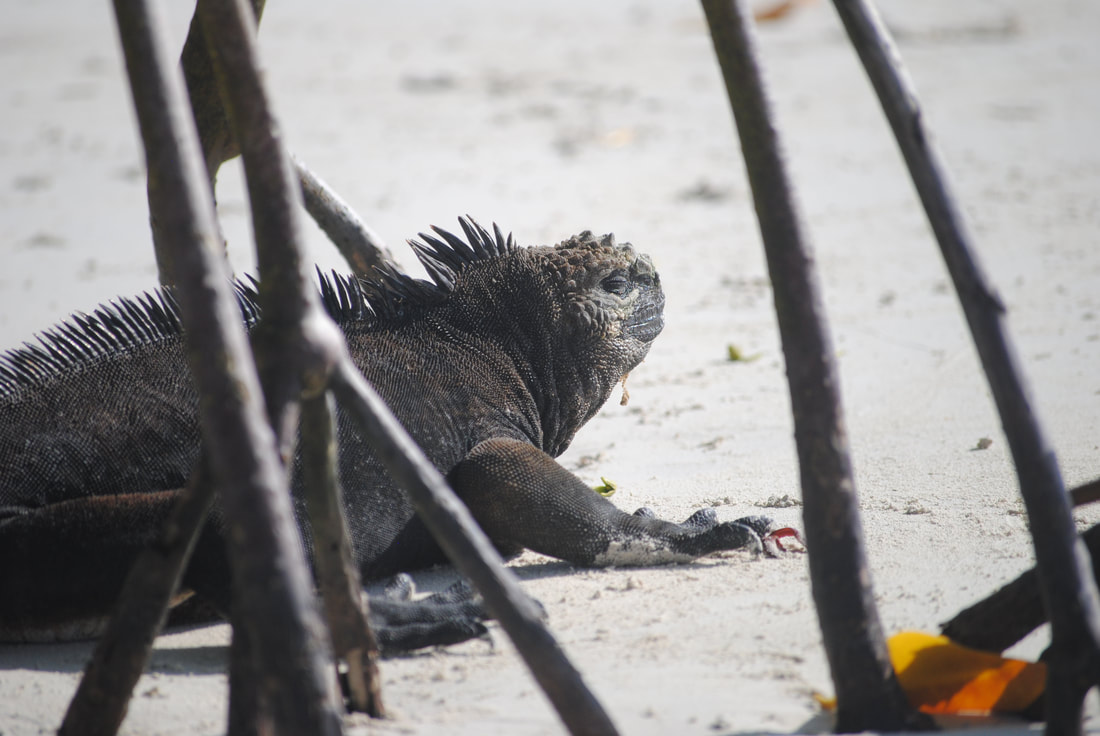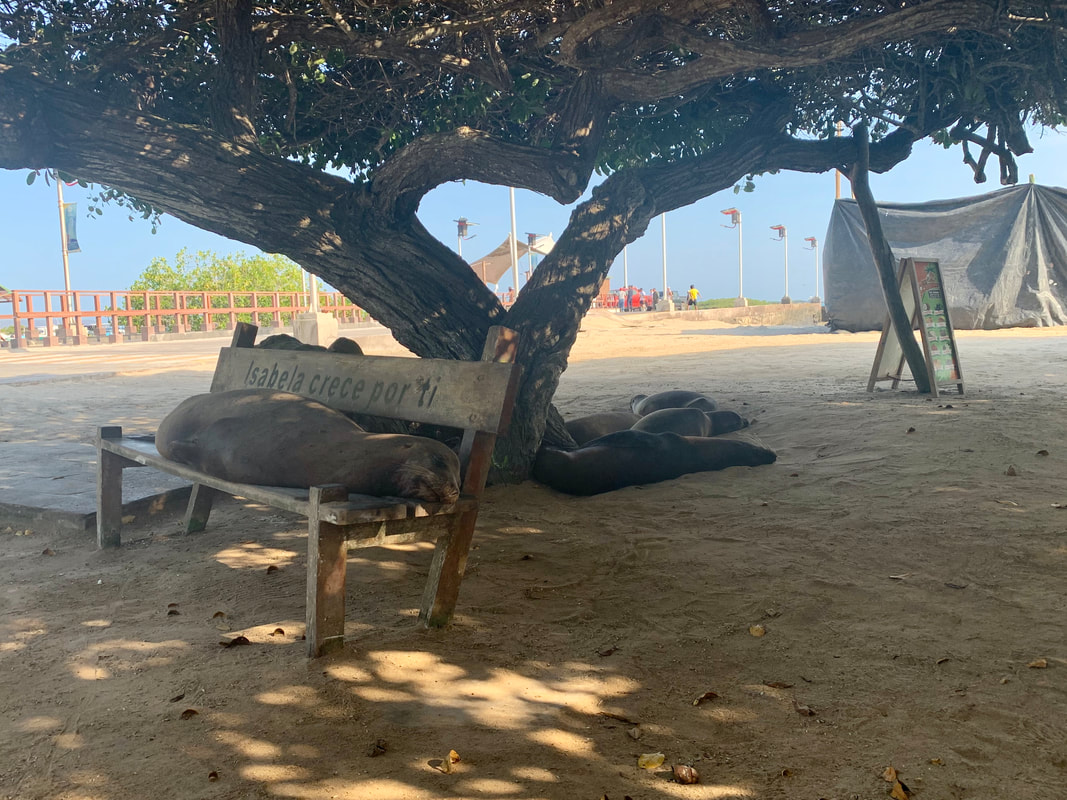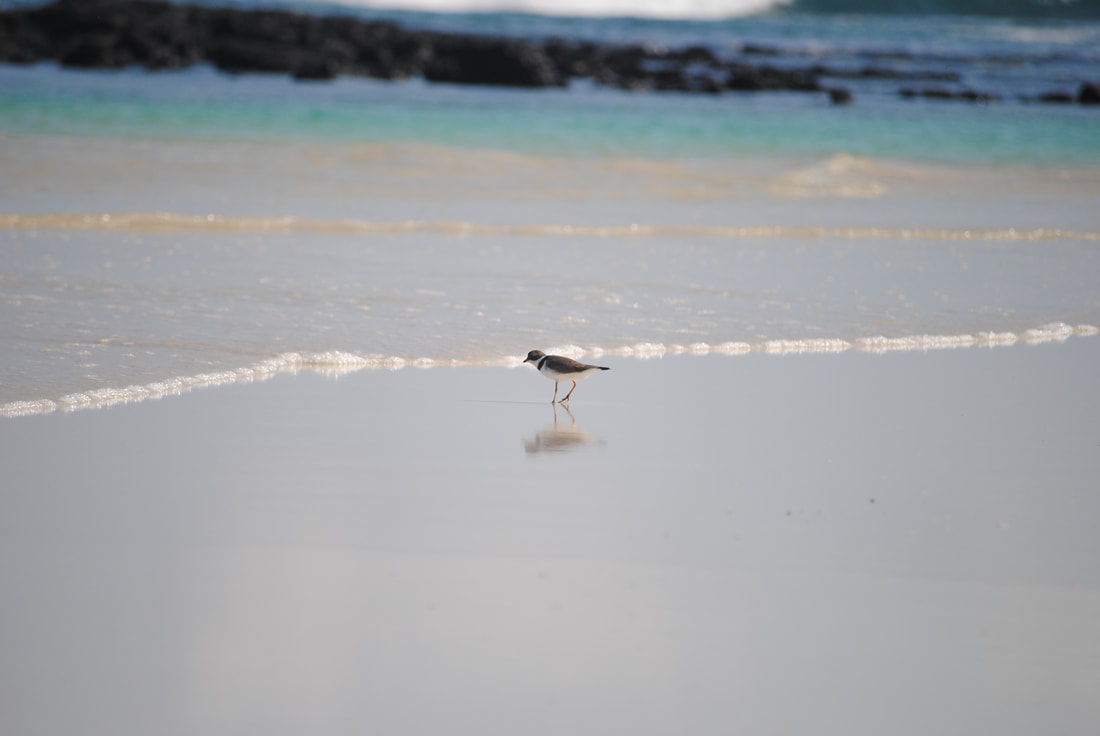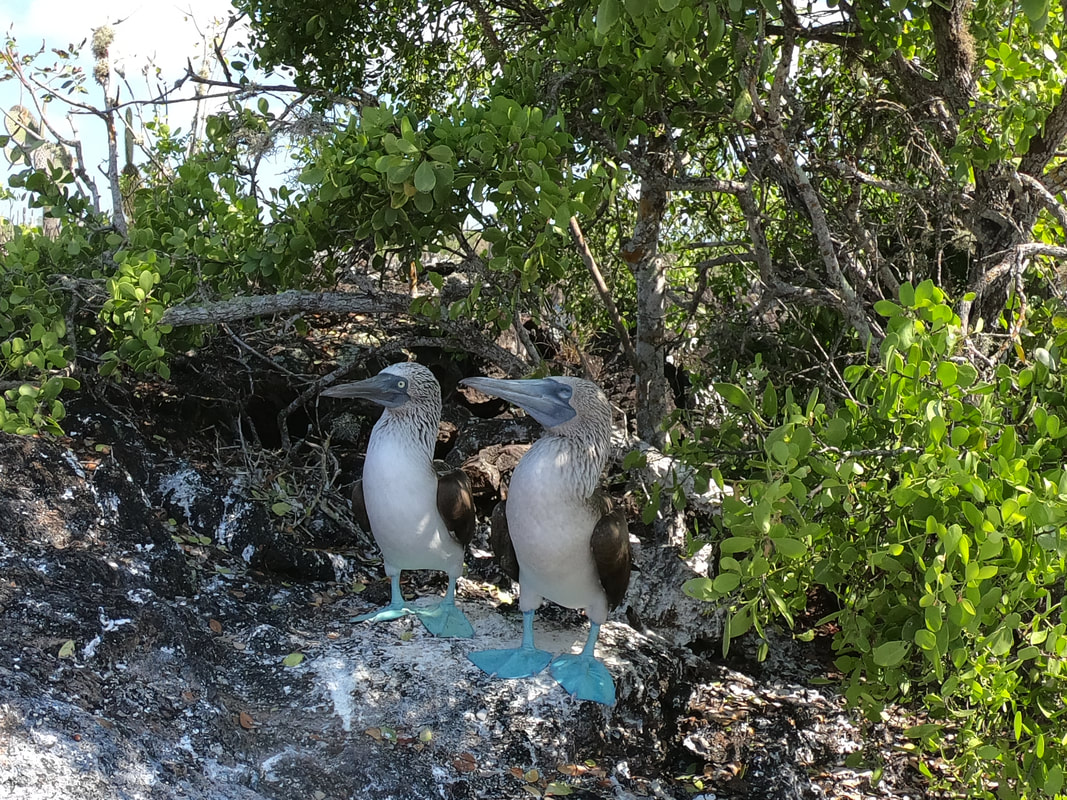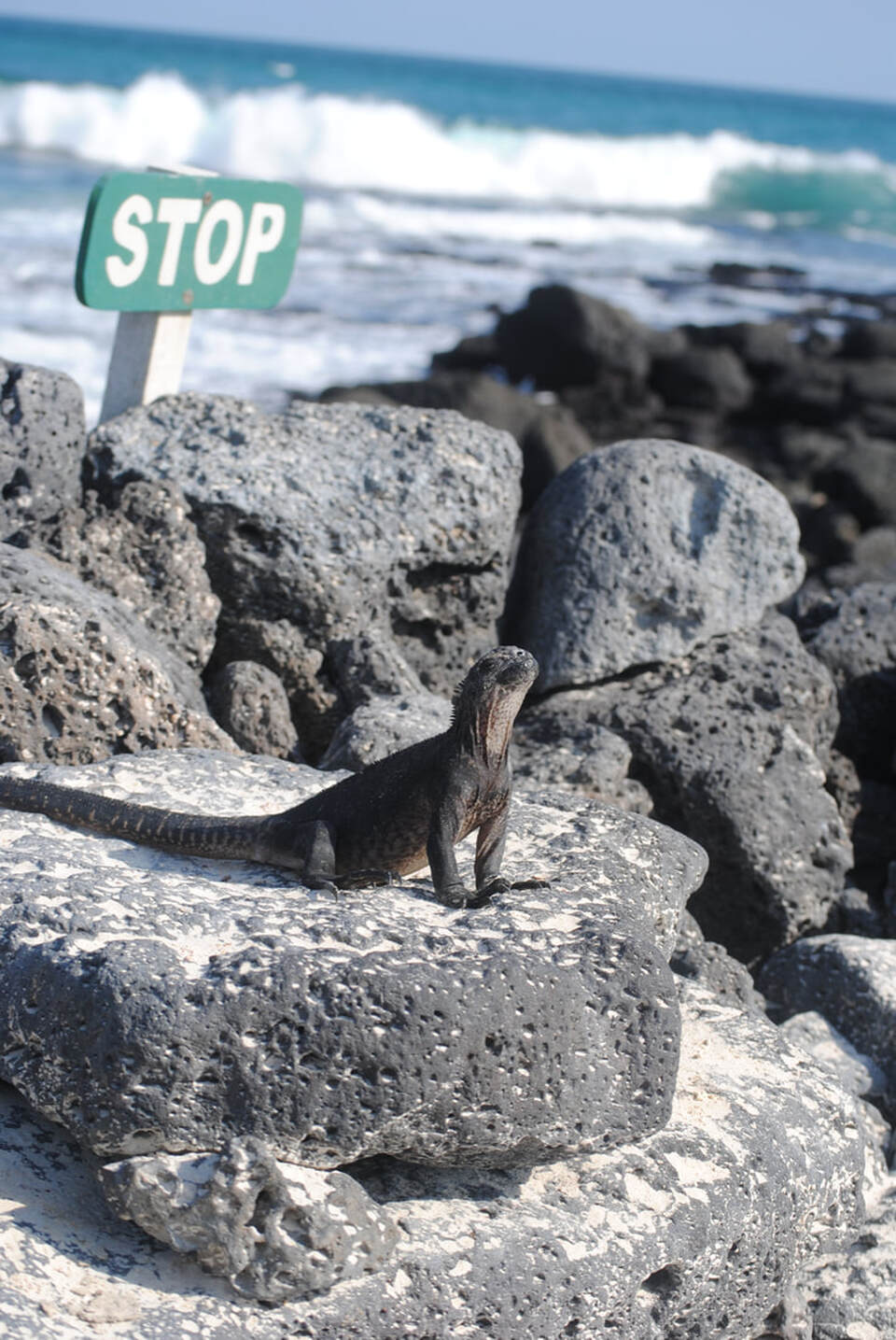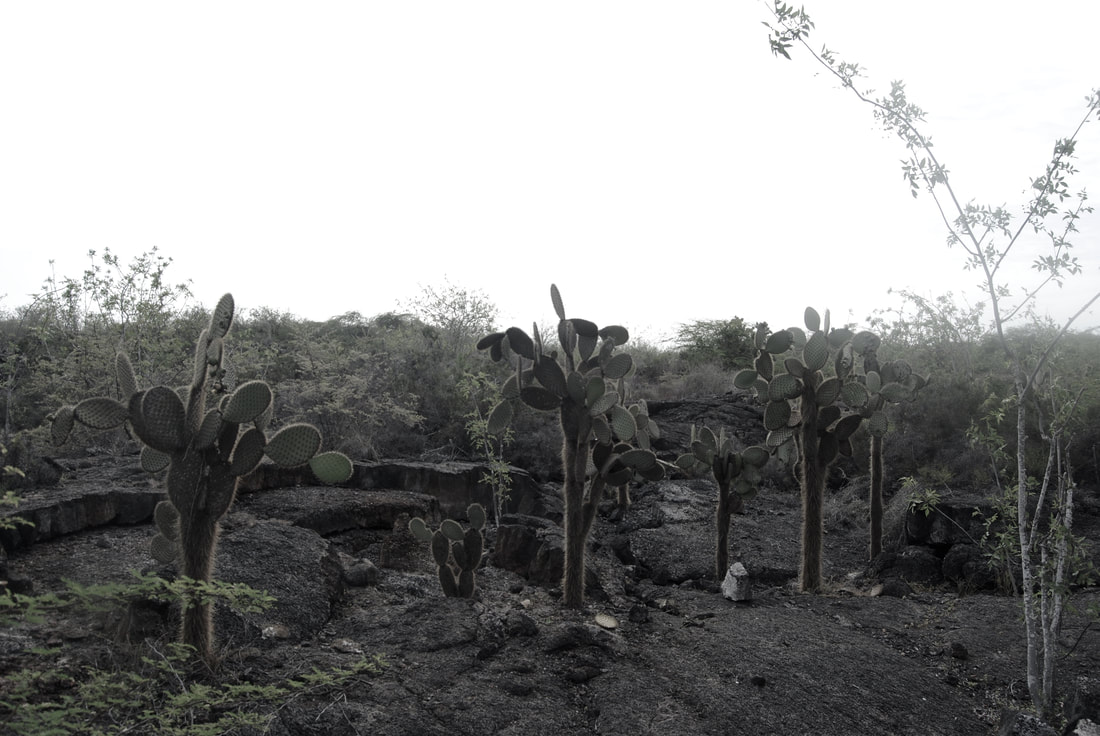Galápagoes Observations
by Jenny Yoo
Is it not telling that, globally, wildlife cautiously emerged from the shadows, while humans observed stay-at-home measures in lockdown during the pandemic? Kashmiri mountain goats in Wales, red foxes in Israel, pumas in Chile, and macaques in Thailand (1).
Year-round, one encounters wildlife in full glory in the Galápagos. It is composed of 13 major islands, six small islands, and scores of islets, yet humans only inhabit five of these. While some parts of the islands remain untouched by human invasion, it is striking that wildlife also co-exist amid significant human presence in the archipelago’s thriving centres filled with bustling tourism, hotels, restaurants, and shops. A walk to the local cafe can take you by sea lions lazing on benches and great blue herons perched on tree-lined paths. A swim in the ocean includes the accompaniment of sea lions, green sea turtles, and sharks.
Residing along the equatorial line in the Pacific, the Galápagos represent a corner of the world that is relatively preserved from human invasion. The wildlife neither shirk from, nor react at all really, to the presence of people. Having occupied suburbias or city centres all my life, recent travels to these pristine islands make me ponder urbanization and its norms of pavement and manicured lawns.
This two-week trip was booked on a whim—a result of a casual conversation with my friend, Malia. We’d dreamily talk about visiting the islands, sharing documentaries and articles. And suddenly, we found ourselves waiting at the airport gate with stuffed backpacks and well-worn guidebooks in hand.
With the caveat that I am not a subject-matter expert in biology or ecology, the following are snapshots of observations from our trip on the theme of water.
Waves as a means to hunt: The sanderling is a shore bird we encountered for the first time in Tortuga Bay on Isla Santa Cruz. Beachcombing on the sheer, perfect sand, this species of bird scurries in sync with the movement of the waves up and down the beach. It uses the surf to find prey. The speed with which it sprints to and fro caught my eye—reminiscent of Fred Flintstone’s twinkletoes, bowling in the 1960s animated series. This sight, for some reason, brought me pure glee.
Since the trip, I’ve noticed the lives of birds at home. Working in lockdown, my desk sits next to a window that looks out onto my condo balcony downtown. In the mornings, I am usually greeted by a few small city birds who rest on the balcony railing for a minute or two, their beaks filled with food. It’s a striking realization that nature persists, even on the 42nd floor. How resilient they are, to hunt, forage, and build homes in this concrete jungle.
In contrast to animals exploring cities in lockdown, I’ve been pondering whether the world of work and the value of urban density will evolve enough after the pandemic such that someone like myself—a young professional seemingly tied to the financial districts of large, urban hubs—can cautiously emerge from the shadows of the city to explore country life. I (not so secretly) dream of a more pastoral existence where I can scurry in sync with the waves up and down a beach in search of sea glass.
Adaptation to ocean water: As the only seafaring iguana species in the world, the Galápagos marine iguanas were a daily part of our trip. Often found sunbathing on the jagged, volcanic rocks lining the seaside, this remarkable species has evolved to swim and feed in the salt water, fighting ocean temperatures and currents. Their love of the sun centres on a need to raise their body temperatures before entering the water. As reflected in their dark colouring, absorbing the heat of the sun is key to their survival. Their adaptation to salt water is also manifested in sneezes that release salt from their bodies.
Though Charles Darwin described these creatures as “most disgusting, clumsy lizards (2),” it may be contended that they most brilliantly represent Darwin’s theory of evolution. Observing them up close, their mouths look to be smiling and their eyelids are always pleasantly droopy. I very much identified with these creatures and thought we were quite alike in our love of the warm sunshine and sea breeze.
Water retention as the key to survival: In another reflection of the magnificence of Galápagos life, a subset of opuntia cacti (colloquially called prickly pear cacti) unique to these islands display the importance of water and adaptations to the scarcity of it. They are able to self-pollinate so as to reduce reliance on other cacti for reproduction. Their thick spines and leaves retain water for survival under the hostile equatorial sun. Serving as an important source of food and water for animals inhabiting arid parts of the islands, these stately cacti can grow up to 12 metres tall (3).
I recall the exact moment when Malia and I first appreciated their size. At modest human height, our eyes rested on a rugged rust-brown tree trunk, akin in my mind to those of the coniferous trees in Canada. Our gaze slowly continued upwards to the prickly pads only to realize we were looking at a cactus! In sync, we looked at each other, our mouths hanging open in awe. Over the course of the trip, Malia became particularly smitten with these plants, hugging the (non-prickly) tree trunks on many a hike.
Our tour guide, Dario, was an indispensable part of the trip and, with a local lens, he provided an education on a range of issues, from the importance of supporting local economies to understanding the impact of climate change on flora and fauna. Rising sea levels and temperature changes affect all life in the delicate ecosystems of the Galápagos, as do invasive species introduced by human travellers, both intentional and inadvertent. On the island of Floreana, the once-thriving Galápagos mockingbird used to rely on the prickly pear cactus for food, protection, and nesting. Cattle, brought by humans, devoured all of the cacti on Floreana, driving the mockingbird to extinction (4). Even today, goats and rats introduced by humans threaten the cacti and the ecosystems of which it is a part (5).
Contributing to the livelihoods of local vendors and industries yields a more sustainable form of investment for both the Galápagos and Ecuador. We learned that land-based travel through the islands (as opposed to cruise-based itineraries) translates into more direct revenues for locals. The assumption that tourism is an automatic positive economic driver was challenged throughout this trip. Appreciating that there is no single answer—if any at all—to ethical and sustainable travel, I will think critically about how my travel decisions leave an impact on the places I visit going forward. Alas, to become a global citizen!
With one last pause, I note that to travel is a privilege. Unbeknownst to us at the time, we ended up on the last flight out of the islands as borders were shut down during the global spread of COVID-19. Dreaming of the next adventure, vámonos!
(1) Josh K. Elliott. "An Earth Day like no other, in photos: Animals take over during coronavirus lockdown". Global News, 22 April, 2020.
(2) Charles Darwin’s Beagle Diary, edited by R. D. Keynes, Cambridge University Press, 2001, pp. 353.
(3) "The Importance of Opuntia". Galapagos Conservation Trust, 3 July 3, 2017.
(4) Juliet Eilpertin. "Invasive species threaten Galapagos’s diversity". The Washington Post, 27 February 27, 2006.
(5) "Prickly pear cactus". Galapagos Conservation Trust.

